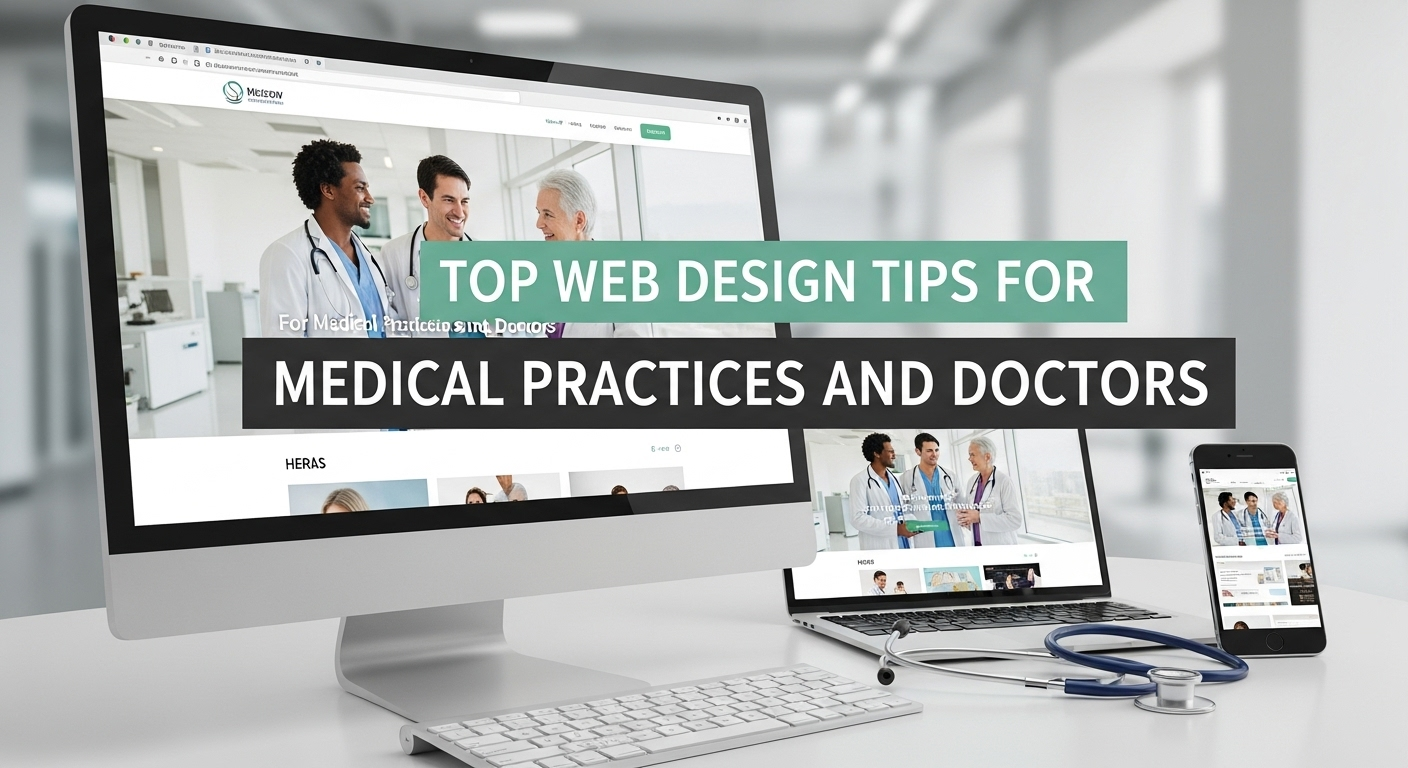These medical website design tips will help your clinic build trust, increase online visibility, and convert visitors into patients. A well-designed practice website is more than a brochure - it’s the front door for patient experience, bookings, and ongoing care.
Introduction: Why Medical Website Design Matters
Patients search, compare, and judge medical practices online. Your website must answer common patient questions quickly, show credibility, and make it easy to book care. Following proven design, accessibility, and SEO practices reduces friction and increases patient trust.
Understanding the Unique Needs of Healthcare Web Design
Patient Trust and Credibility
Display clinician credentials, professional photos, facility information, and verified patient reviews. Trust signals like board certifications, membership logos, and clear contact info reassure visitors and reduce anxiety.
HIPAA and Data Privacy Considerations
If your site collects protected health information (PHI) - through forms, messaging, or portals - work with developers who understand HIPAA requirements. Use encrypted forms, secure hosting, and clear privacy notices.
Accessibility and Inclusivity in Healthcare Websites
Implement accessibility basics: semantic HTML, alt text, readable font sizes, color contrast, keyboard navigation, and screen-reader compatibility. Accessibility isn’t optional - it’s essential to serve all patients and avoid legal/ethical issues.
Key Medical Website Design Tips for Professionals
Clear and Professional Branding
Use calming, professional colors and consistent typography. Your brand should reflect the specialty and patient expectations - pediatric, geriatric, surgical, or primary care all benefit from tailored visual cues.
Easy Navigation and User-Friendly Layouts
- Put "Book Appointment" and phone number in the header.
- Group services logically (by condition, by service type, or by provider).
- Use plain-language labels so patients know where to click.
Mobile Responsiveness and Fast Load Times
More than half of healthcare searches happen on mobile. Use responsive design, compress images, and prioritize speed - slow pages increase abandonment and harm rankings.
Strong Call-to-Actions (Appointments, Inquiries, etc.)
Place clear CTAs on every page: "Book Online," "Request a Callback," or "Find a Provider." Use contrast and concise text so actions are obvious.
Doctor Website Design Tips to Enhance Patient Experience
Including Doctor Profiles and Credentials
Create dedicated provider pages with short bios, specializations, education, languages spoken, and a friendly photo. These pages amplify trust and improve search visibility for provider-name searches.
Patient Testimonials and Success Stories
Use short, authentic testimonials (with permission) and star ratings. Combine quotes with outcomes-focused language to highlight patient-centered care.
Virtual Tours and Online Booking Features
A short virtual tour or photo gallery reduces anxiety for new patients. Smooth, integrated booking reduces no-shows and administrative work.
FAQs About Medical Website Design
Q1: How important is SEO for a medical website?
Very important - SEO helps patients find your practice online.
Q2: Should every clinic website include online booking?
Yes, it increases convenience and reduces missed opportunities.
Q3: How can doctors build trust through web design?
By showcasing credentials, patient reviews, and secure communication channels.
Q4: Do medical websites need HIPAA compliance?
Yes, if handling patient data, forms, or portals.
Q5: How often should a clinic website be updated?
At least every 2–3 years, or more frequently if adding new services or features.
Q6: Can a professional web design agency handle clinic SEO?
Yes, many agencies provide SEO as part of their medical web design services.
Conclusion & Next Steps
Implementing these medical website design tips will make your practice site easier to find, safer to use, and more effective at converting visitors into patients. Prioritize trust signals, accessibility, mobile performance, and clear CTAs to create a patient-centered online experience.
